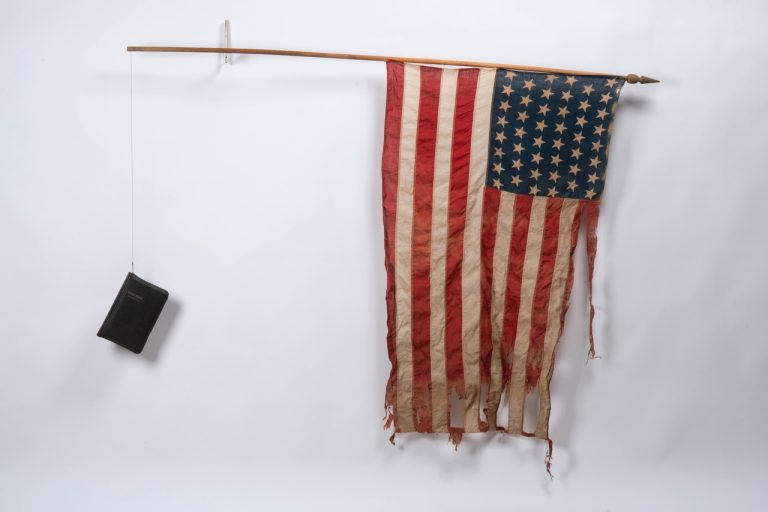Born in 1953 in St. Louis, Missouri, Clint Imboden has spent decades shaping ordinary objects into something deeper. Now based in the San Francisco Bay Area and living in Oakland, Imboden builds work that lives at the crossroads of nostalgia, politics, and personal memory. His sculptures, built from old hand tools, worn toys, and sharp text, don’t just sit quietly in a gallery—they push and prod at the viewer’s sense of familiarity and discomfort.
What makes Imboden’s work stand out is his relentless curiosity about objects that seem too simple to matter. He doesn’t just collect; he transforms. His larger installations feel like conversations between past and present, between function and emotion. Through repetition, assemblage, and a steady hand, Imboden creates pieces that offer new ways to think about balance, identity, and history—especially in a country and a culture where both seem increasingly fragile.
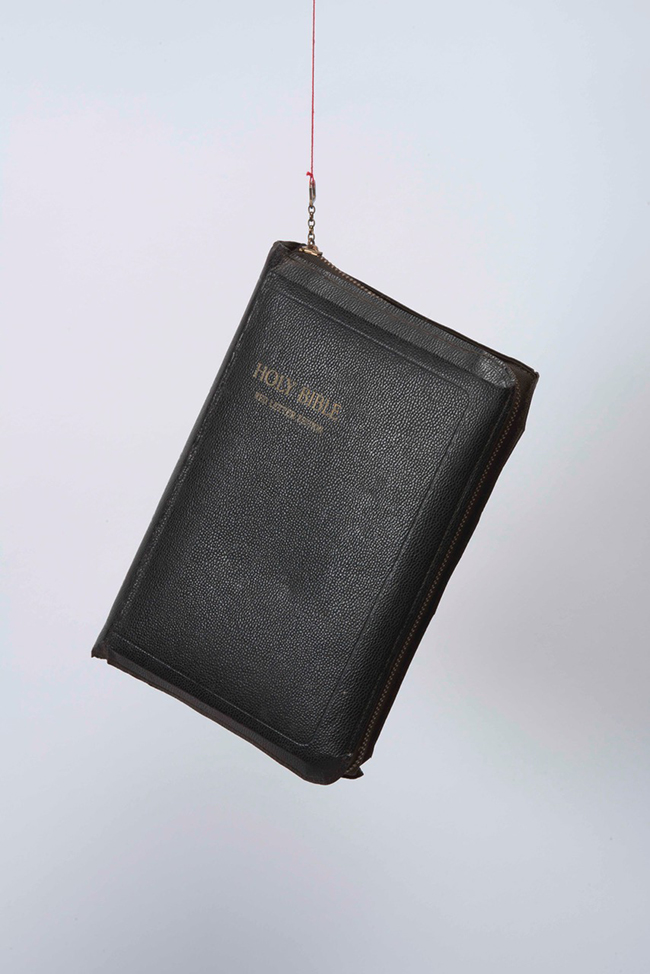
The Work: “balance” (2014–2025)
In balance, Clint Imboden drills into a question that’s been gnawing at him for a long time—what keeps things from falling apart?
The project started back in 2014. Imboden had an idea: a series that explored the tightrope act we all live with, the razor-thin space between stability and collapse. He built three pieces. But something didn’t feel right. He wasn’t happy with how they sat against the wall. It wasn’t just about the art—it was about the feeling the art was supposed to provoke. So he stopped. The series went quiet for eleven years.
A lot happened in those years.
Personally. Politically.
By the time Imboden circled back to balance, the country he lived in felt almost like a different place. Something in the culture had shifted. The tension had snapped tighter. Now, when he looked at those early pieces, he didn’t just see unfinished work. He saw a metaphor that was even sharper—and a chance to get it right.
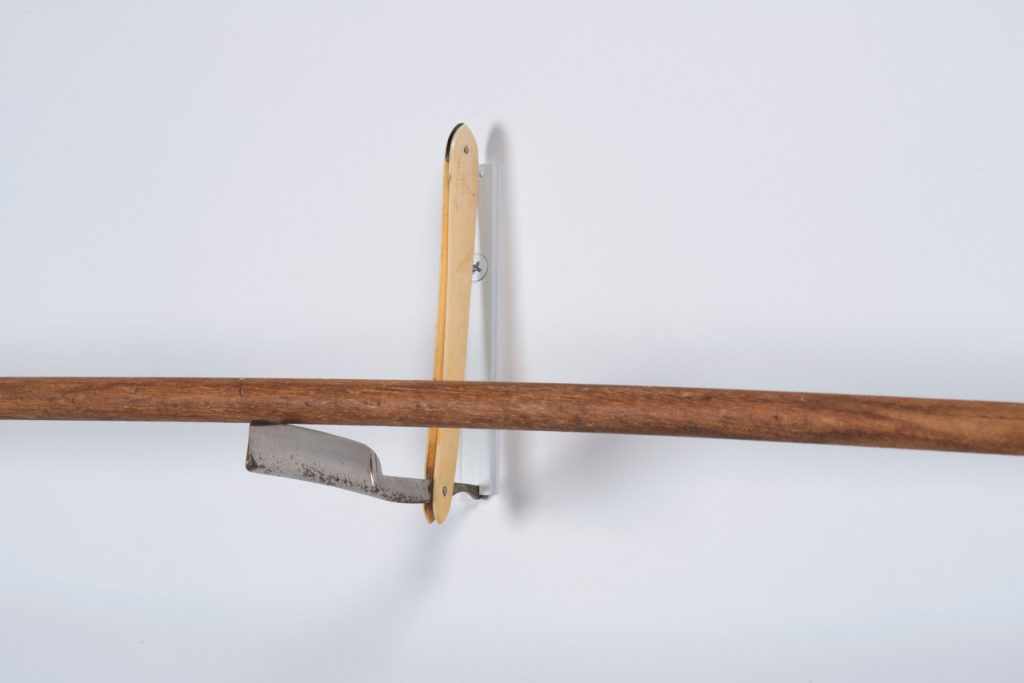
He rethought how the work needed to live on the wall. He found a way to tie everything together with more precision, more urgency. The concept stayed the same: fragile stability. But now the presentation hit harder.
In each piece, a vintage straight-edge razor sticks straight out from the wall—thin, sharp, deliberate. Balanced carefully, almost impossibly, on that razor’s edge is a small to medium-sized American flag, still attached to its pole. The only thing keeping the flag from falling to the ground is a counterweight.
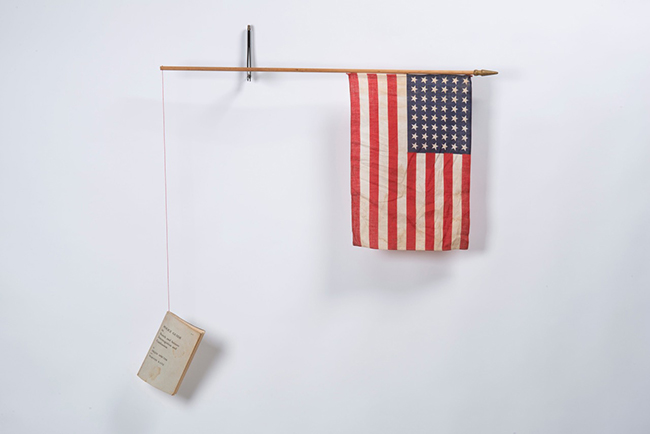
The counterweights aren’t random. They symbolize the heavy, unseen forces that tug at the flag—political pressure, economic disparity, social unrest, misinformation, apathy. All the things that pull at the fabric of democracy, sometimes gently, sometimes with a violent jerk. A little too much weight on one side, or a little shift in the wrong direction, and the whole thing would crash.
The physical setup says it all: there’s no margin for error.
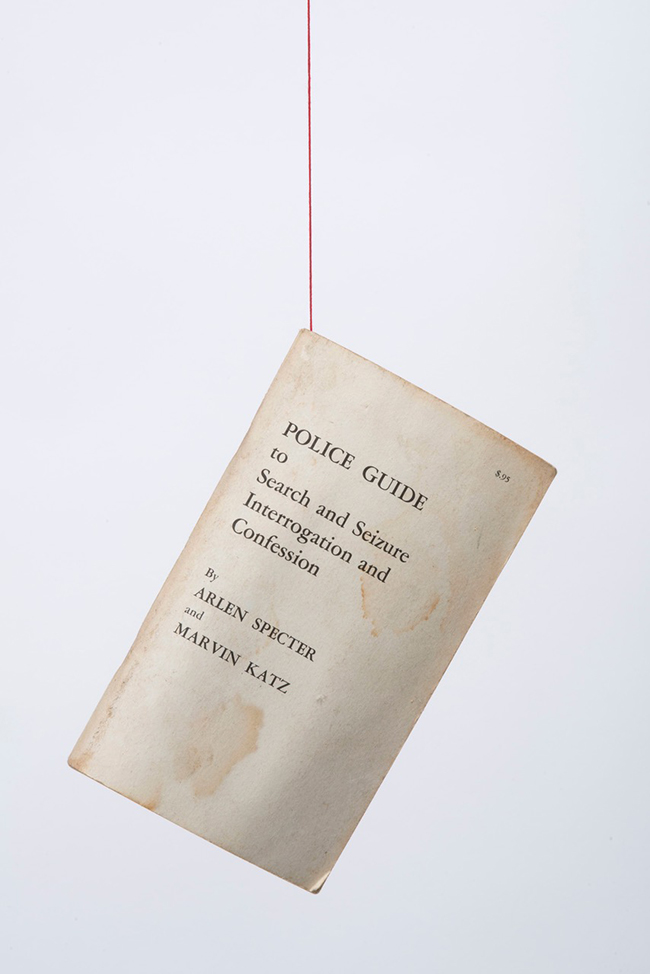
Imboden doesn’t dress it up with complicated metaphors. He just lets the materials do the talking. A razor blade. A flag. Gravity.
Nothing more.
Nothing less.
When you stand in front of one of these pieces, you can feel the tension in your chest. You want to hold your breath, just in case breathing too hard might tip the balance. It’s that delicate. That real.
Each piece in balance is a reminder that democracy isn’t a fixed thing. It doesn’t just hang there, safe and eternal. It’s something that’s constantly being pulled in every direction, threatened, weighted down.
Sometimes by forces we see.
Sometimes by forces we don’t.
And it’s not just about politics. Imboden’s flags tap into something more personal too—the idea that in life, balance is always temporary. Always at risk. Always asking for your attention.
There’s no trickery to balance. No hidden wires, no fake props. It’s honest. Sharp. Raw.
It’s a simple construction of fragile things—and maybe that’s what makes it feel so true.


